Lenzburg Castle
About Museum Aargau
Hauptmenü

The residential tower is Lenzburg Castle's oldest building and was constructed by the powerful Counts of Lenzburg in around 1100. It was extended in 1170 with the addition of the southern tower and a small courtyard.
A castle chapel was also added in the 11th or 12th century but this was dismantled in the 18th century.
The Habsburgs expanded the complex: Duke Frederick II of Habsburg had the Knights' House built in around 1340. A residential tract was added on the western side which was demolished in 1509.
This building complemented the fortification belt around the crest of the hill. The southern tower had two upper floors added to it between 1340 and 1344.
After conquest by the Swiss Confederation in 1415, a series of Bernese bailiffs resided in the castle from 1442 onwards.
This period saw the construction of the Bailiff's Castle and today's Stapferhaus in the Bernese style. Other buildings such as the bakery, washhouse, armoury and guards' house have been lost. A prison was installed on the first floor of the southern tower in the 16th century.
Lenzburg Castle was then converted into a fortress in the 17th century: a double gate system with a bailey was erected on the northern side in 1625 and the height of the earth banks on the eastern and southern side was raised. An 11-metre high ridge was banked up between 1642 and 1646, thereby creating the Eastern Bastion.
At the beginning of the 18th century, the vaults were added above the gatehouse with the guard's residence and the winch tower.
The castle was converted into an educational institution under German educator Christian Lippe.
The rear building was used as a schoolhouse while the bailiwick served as the teachers' residential tract. A garden for vegetables and other plants was laid out in the courtyard.
Augustus E. Jessup had the castle extensively refurbished and fitted with central heating, water and electricity. The Eastern Bastion was lowered by six metres and rose garden was created.
1853-1956The castle once again underwent full refurbishment from 1978 to 1986, and French-style gardens were laid out in the south-western section of the castle grounds.
From 1956The first mention of the castle dates back to 1077. It was the residence of the Counts of Lenzburg.
The dynasty died out at the death of Ulrich IV in 1173. In his will the latter bequeathed the castle to the German Hohenstaufen emperor Frederick Barbarossa. The Hohenstaufen were ousted from Aargau in 1200.
In 1230 the castle passed by marriage to the Kyburg dynasty: the latter established a fortified market settlement by the castle hill that later developed into the town of Lenzburg. The male line of the Kyburg dynasty died out in 1264.
Rudolf I, Count of Habsburg, purchased Lenzburg Castle in 1273. The Habsburgs resided in the castle up until 1344. After this the Schultheiss-Ribi family took up residence in the castle and used it as a base from which to administer the region on behalf of the Habsburgs.
After the conquest of Aargau by the Swiss Confederation in 1415, Bernese bailiffs resided in the castle from 1444 onwards.
These were elected for four to six years from among members of the Council of the City of Bern. The best-known of them was Adrian I of Bubenberg, bailiff from 1457 to 1461.
In 1624, Joseph Plepp made a precise drawing of the castle along with a layout plan. This was used for a large-scale fortification project which was only partially carried out.
The last Bernese bailiff, Viktor of Wattenwyl, handed over the castle to the French in 1798.
After the foundation of the canton of Aargau in 1803, the castle passed into state ownership and was rented in 1823 by the educator Christian Lippe who used it to house an educational institution for boys.
After his death the castle changed hands several times.After the foundation of the canton of Aargau in 1803, the castle passed into state ownership and was rented in 1823 by the educator Christian Lippe who used it to house an educational institution for boys. After his death the castle changed hands several times.
The Wedekind family emigrated from Germany to Switzerland and purchased Lenzburg Castle in 1872. The family's six children included the later poet Frank Wedekind, who spent his youth at Lenzburg Castle.
In 1893 the American Augustus E. Jessup purchased the castle and moved into his new residence with his wife, Lady Mildred Marion Bowes-Lyon, who was related to the British royal family.
In 1911, ownership of Lenzburg Castle passed to James Ellsworth, father of polar explorer Lincoln Ellsworth.
In 1956 Lincoln Ellsworth's widow sold the castle to the canton of Aargau and the Municipal Authority of Lenzburg, who established a joint foundation.
From 1978 to 1986 the castle was elaborately renovated and prepared for access by the general public. All collections relating to the history and culture of the canton of Aargau were assembled in Lenzburg Castle in 1987 and a permanent exhibition was established under the title Historical Museum of the Canton of Aargau. In 2007 the name was changed to Museum Aargau.